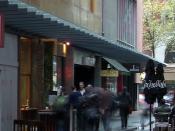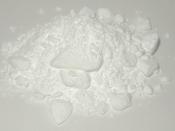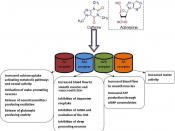Caffeine is an alkaloid (nitrogenous organic molecule) methylxanthine that can be found naturally or artificially in a wide range of food products, such as, coffee, tea, chocolate, cola beverages, Yerba maté, guaraná, etc. It is usually recognised for its distinct bitter taste and for its properties as a stimulant of the central nervous system, heart, and respiration. In Australia, about 240mg of caffeine is consumed per person each day from all sources.
Caffeine in its pure state it is an odourless, but extremely bitter white powder. The chemical formula is C8H10N4O2, and its systematic name is 1,3,7-trimethylxanthine or 3,7-dihydro-1,3,7-trimethyl-1H-purine-2,6-dione. Medically it is just recognised as trimethylxanthine. Caffeine is sometimes called theine (found in tea) as it is virtually identical to the caffeine in coffee.
The effects of caffeine include an increase in blood pressure, stimulation of the central nervous system, promotion of urine formation, and a stimulation of the action of the heart and lungs.
Caffeine is also used medically for treating migraines, since it is able to contract widened blood vessels. It can also increase the effectiveness of painkillers such as aspirin, increase urine production, and to some extent relieve asthma attacks by widening the bronchial airways. Recreationally, it is used to supply a "boost of energy" or a feeling of greater alertness. College students and drivers often take caffeine to stay awake late into the night. On the other hand, many people take caffeine in the mornings to provide them with a boost.
Caffeine is an addictive drug that functions by using the same methods that amphetamines, cocaine, and heroin use to stimulate the brain. However, the effects of caffeine are much milder than most illicit drugs. It is believed to act on the brain by blocking adenosine receptors. Adenosine is a chemical produced in the brain...



Work Cited..
Was an interesting read, but when did they stop making us cite in our essay and just letting us do it at the end??
0 out of 0 people found this comment useful.